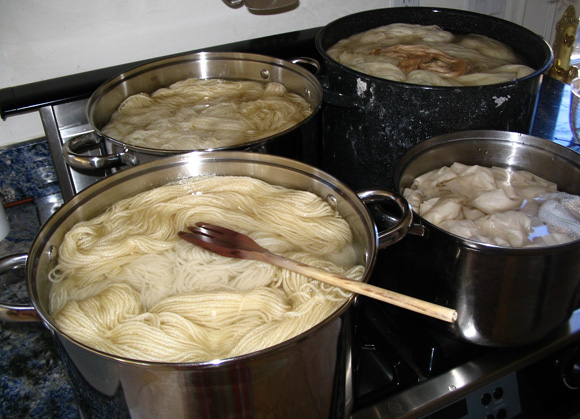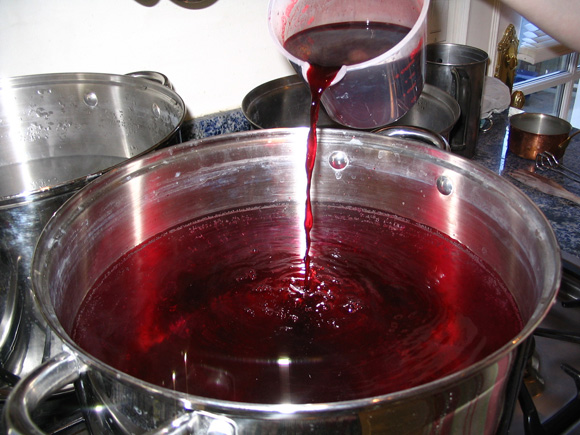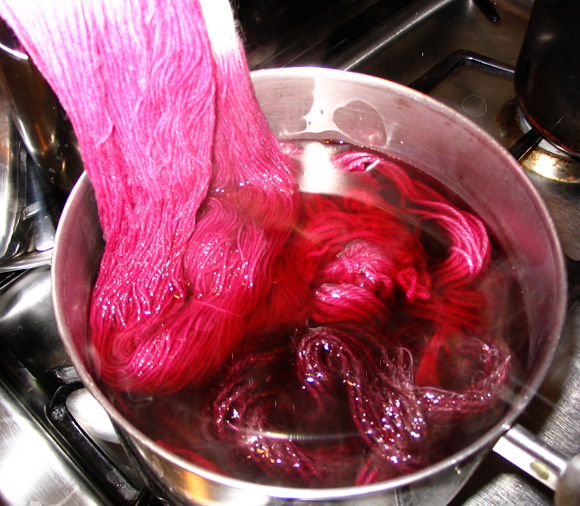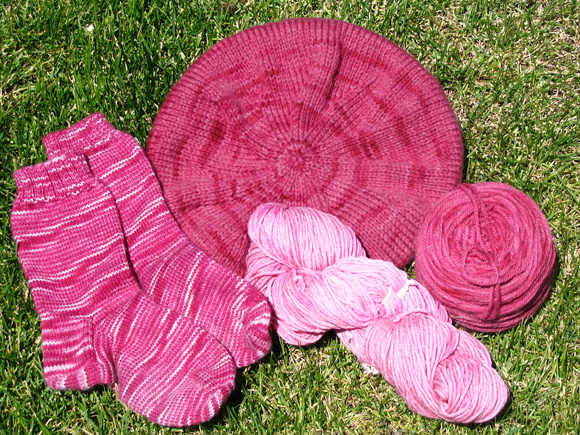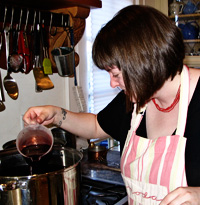|
|
If you have ever been curious about experimenting with natural dyeing, then my friend, this bug is for you. Meet Dactylopius coccus, the Cochineal bug, and prepare to be impressed.
Cochineal is a potent natural dyestuff that is derived from the crushed, dried bodies of the female cochineal bug, a scale insect native to South America. It dyes beautifully vibrant reds, purples, and pinks. The Cochineal bugs live and feed on the Nopal Cactus, commonly known as the Prickly Pear. They have been in use as a natural dye for hundreds of years, and are now being cultivated commercially. Cochineal has even been used as a natural food coloring. It takes approximately 70,000 cochineal bugs to make one pound of cochineal dye. But never fear! You don't have to hunt and harvest these little guys yourself. Cochineal is available in two common forms from many commercial retailers via online or mail order. You can order a small packet of the dried Cochineal bugs and crush them yourself (a dedicated coffee grinder is ideal for this), or you can order the crushed dye powder. Either way, you don't need much, as it only takes about 1 ounce of dye powder to color 1 pound of fiber to achieve a medium shade. |
|
MATERIALS Supplies Before You Begin Safety Mordant
It is a good idea to pre-mordant your fiber in alum, as it is a non-toxic mordant that is easy to work with. Alum also helps to develop clear, vivid colors with natural dyes. Dissolve 0.5 ounce of alum in a little boiling water in your glass jar. Fill your large pot with water and place it on the stove. Add the alum solution and stir. Add your wetted yarn to the bath and slowly bring the water to a simmer. Hold the temperature at a low simmer for 45-55 minutes, gently stirring occasionally. Turn off the heat and let the yarn cool in the mordant. This can take several hours to overnight. Remove the yarn and squeeze out the liquid. You can dye the yarn immediately or let it dry to use later. Preparing the Cochineal Bath Dissolve 1.5 ounces of cochineal powder in a little boiling water in your glass jar. Fill your large pot with water and place it on the stove. Add the cochineal solution and stir.
Add your wetted and mordanted yarn to the dye bath and slowly bring the water to a simmer. Hold the temperature at a low simmer for 1 hour, gently stirring occasionally. Turn off the heat and let the yarn cool in the mordant until it reaches the color you are after.
Carefully remove the yarn from the dye bath and place it in a bath of plain water roughly the same temperature as the dye bath. This is the first of several rinse baths needed to remove the excess dye from the yarn. You can gently stir the yarn in the rinse bath to help remove excess dye, but be careful to not agitate the wool too much. 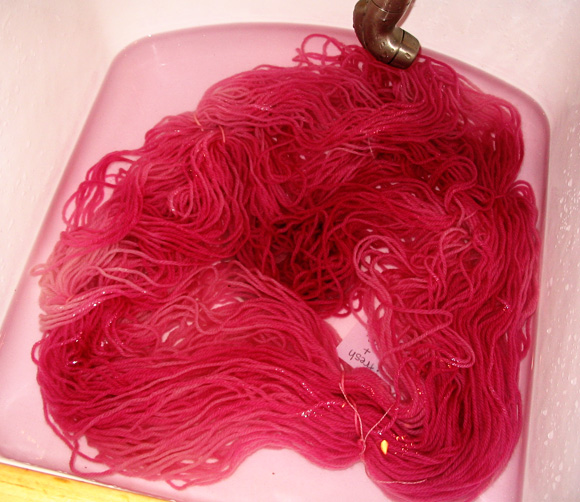 Once the water in a rinse bath is full of dye, run another bath of approximately the same temperature and transfer the yarn to the new bath. Continue rinsing in this manner until the yarn no longer releases color into the rinse bath. I like to put a little wool wash in my final rinse bath to help soften the yarn for knitting. Finishing
I hope you enjoy dyeing your own yarns with Cochineal! It is a beautiful natural dye that is fun to use and great to knit with. Who would have thought that such beautiful colors could come from bug guts? |
| ABOUT THE AUTHOR |
|
|
|
|




